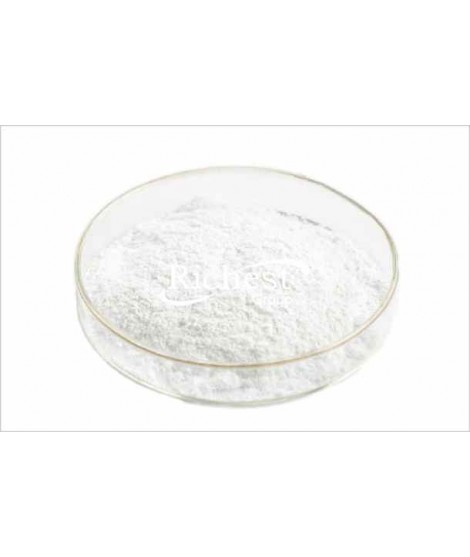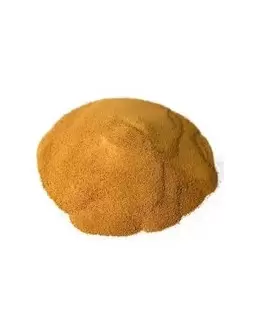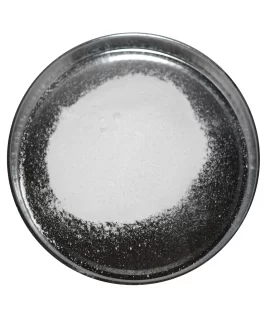LITHIUM HYDROXIDE MONOHYDRATE 99%, kg
6.99 €
01531305
Lithium hydroxide monohydrate, CAS 1310-66-3, lithium alkali, INCI LITHIUM HYDROXIDE.
Parameter | Attribute | ||
Lithium hydroxide | Lithium hydroxide mono hydrate, caustic lithium | ||
Formula | LiOH | ||
Structure |   | ||
IUPAC | Lithium hydroxide | ||
INCI | LITHIUM HYDROXYDE | ||
CAS | 1310-66-3 | ||
Molar mass | 41.96 g/mol | ||
Density | 1.51 g/cm3 | ||
Solubility | In water: 22.3 g/100 mL (10 °C) 26.8 g/100 mL (80 °C) | In methanol: 13.69 g/100 g 20 °C, mixing 48 hours | In ethanol: 2.18 g/100 g 20 °C, mixing 48 hours In isopropanol: 0.11 g/100 g 20 °C, mixing 48 hours |
Lithium hydroxide is an inorganic compound with the formula LiOH. It is a white, hygroscopic powder that is soluble in water and barely soluble in alcohols. Lithium alkali is a strong base, but is the weakest alkali metal hydroxide.
In the lubricant industry it is used to produce lithium grease. The most popular is the lithium fat thickener and is lithium 12-hydroxystearate, which is produced as a lubricant additive because of its high water resistance and usefulness at various temperatures.
In the manufacture of breathing apparatus, lithium hydroxide is used in the breathing gas purification systems of spacecraft, submarines and rebreathers to remove carbon dioxide from the exhaled gases to produce lithium carbonate and water: 2LiOH·H2O + CO2 → Li2CO3 + 3 H2O The latter, anhydrous hydroxide, is preferable due to its lighter weight and less water for the manufacture of breathing systems used in spacecraft. One gram of anhydrous lithium hydroxide can remove 450 cm3 of carbon dioxide gas.
In battery production, lithium hydroxide is used as an electrolyte and as a thermal conductor. It is also used in the production of lithium hydride LiH energy storage devices. Potassium-lithium solid electrolyte, also known as dry electrolyte, is produced according to TU 2133-016-48326337-2015 or TU 6-09-5229-85. For use in alkaline nickel-iron, nickel-cadmium and silver-zinc batteries. Electrolyte production requires:
- 977g Potassium hydroxide 90%,
- 60g Lithium hydroxide monohydrate 99%
- 3 liters of distilled water
Everything is mixed. Cool the prepared electrolyte to (20±5) °C, check the density. The density of the diluted (prepared) electrolyte is controlled with a hydrometer by adjusting the composition by adding water or dry matter to the solution. Solid alkaline electrolyte is used for the production of electrolyte solutions with a density of 1,19 to 1,21 g/cm3. The electrolyte produced must be allowed to settle for 6-12 hours, after which the purified part must be drained and separated from the precipitate. The finished filtered electrolyte can be poured into prepared batteries or stored in a storage container. The electrolyte should be stored in a tightly sealed container to minimise carbonate formation.
In heat transfer systems, lithium hydroxide is used to alkalise the heat transfer fluid. Especially in high pressure systems in nuclear reactors to reduce corrosive effects. Lithium hydroxide maintains a pH between 6.9 and 7.4 at operating temperature.
In metalworking, lithium hydroxide is used in the anodising process of magnesium alloys as one of the components in order to obtain the mildest possible base conditions.
In cement manufacture, lithium hydroxide is used as an additive to inhibit alkaline reactions of silicates and to accelerate the setting of cement.
Important: Add the item to your basket, fill in the recipient's details and confirm your order. Thank you!
To save your precious time, we will deliver your order to your address at a time convenient for You!
*- The pictures of the goods may not correspond to the actual appearance, color, assembly or shape of the goods and their packaging. The information in the product description is of a general nature and may not correspond to the information on the packaging of the product and may not be the exact use of the product. The information given on the stocks and prices of goods may, in certain cases, differ from the actual prices and stocks of goods
Signal word: Danger |
Hazard icons:
|
Danger phrases: H302 Harmful if swallowed H314 Severe skin burns and eye damage |
Precautionary statements: P260 Do not inhale dust/fumes/gas/smoke/vapors/aerosol. P280 Wear protective gloves/protective clothing/use eye/face protection. P303+P361+P353 IN CASE OF CONTACT WITH SKIN (or hair): Immediately remove all contaminated clothing. Wash skin with water or spray. P304+P340 INTRODUCTION: Remove the victim to fresh air; he/she must be in a comfortable position to allow free breathing. P305+P351+P338 IN EYES: wash gently with water for a few minutes. Remove contact lenses, if present and if easy to do so. Continue washing eyes. P310 Call the ACCIDENT INFORMATION OFFICE/consult a doctor immediately |
01531305
Related products
(8 other products in the same category)












